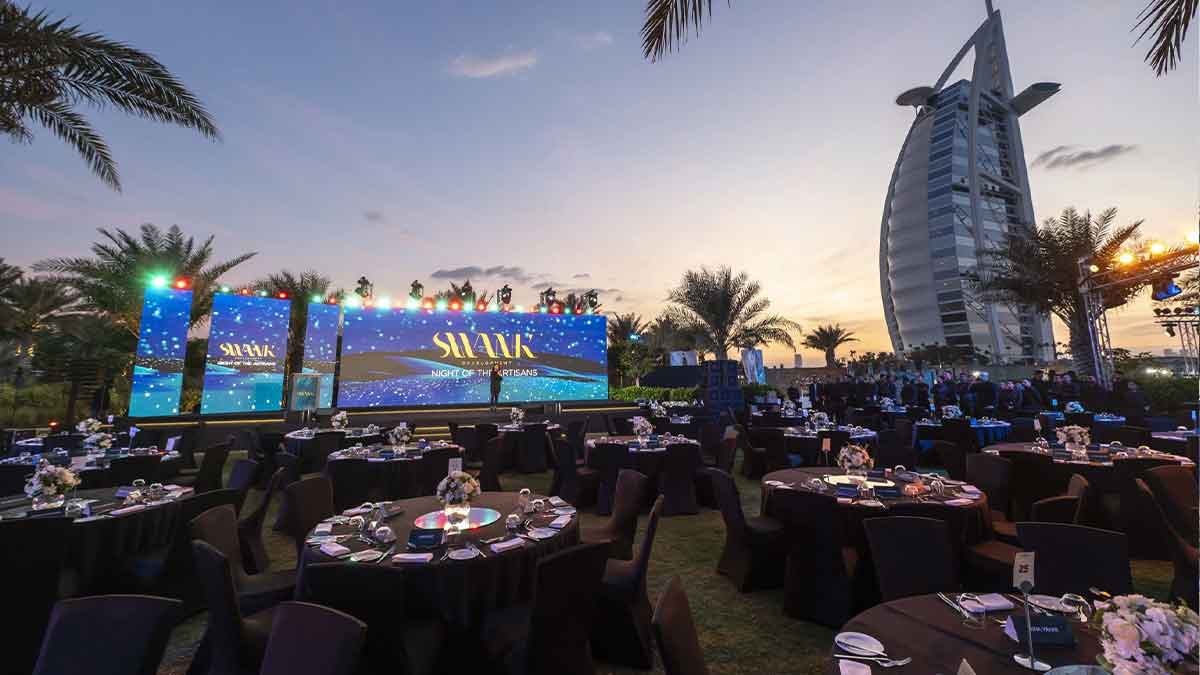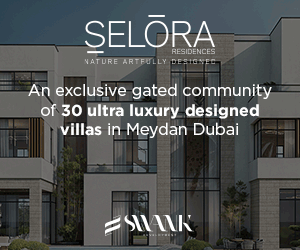Very few cities have transformed the way Dubai has in just a few decades. With its sweeping coastline, desert horizons, and a skyline that reads like a list of world records, it’s no surprise the city consistently ranks among the most visited destinations on the planet. Today, Dubai stands as a global phenomenon, a place people dream of visiting, living in, and investing in powered by vision, ambition, and a standard of hospitality that’s hard to match.
To celebrate this rise, let’s explore Dubai up close: its essence, its epic landmarks, and the qualities that make it both a traveler’s paradise and an investor’s favorite before transitioning to the builders of this story: the Real Estate developers who turned imagination into addresses.
About Dubai
Dubai’s journey from a trading port and fishing village to a global hub is a story of foresight and resolve. As one of the seven emirates of the UAE, its geographic advantage, pro-trade policies, and business-friendly environment opened the door to international commerce, tourism, and investment.
Beyond the economics, Dubai is visually and experientially rich: a serene Arabian Gulf coastline, ochre dunes, and a cityscape that fuses geometry with grandeur. It is a regional crossroad where entrepreneurs, families, and creatives find opportunity and where infrastructure keeps pace with ambition.
Dubai’s Global Appeal
Dubai combines tradition and technology with unusual ease. A stable economy, multicultural fabric, and forward-looking policies (including long-term residency options) make it aspirational for residents and businesses alike. The city’s commitment to safety, service, and ease from immigration processes to resident services reinforces its reputation as a place where people can put down roots, not just pass through on holiday.
Top Attractions in Dubai
Dubai is home to architectural icons and immersive experiences that have redefined urban leisure. If you’re planning your itinerary, begin with these ten essentials.
Burj Khalifa
An emblem of modern engineering, Burj Khalifa rises to 828 meters the tallest building in the world. Its three-winged design, inspired by the Hymenocallis desert flower, and a central hexagonal core, maximize views of the Arabian Gulf. Islamic design notes echo through its silhouette, creating a dialogue between regional heritage and global ambition. Pair your visit with Dubai Mall (for retail, dining, and the aquarium) and an evening performance at Dubai Opera next door.
Burj Al Arab
Sail-shaped and shorefront, Burj Al Arab sets the bar for experiential luxury. A curated 90-minute guided tour reveals design narratives, bespoke materials, and suites that reimagine hospitality as theatre. Michelin-star dining, a destination spa, and a private beach club speak to Dubai’s love of craft, detail, and spectacle where every stay is distinct by design.
Museum of the Future
Clad in calligraphy and curved steel, the Museum of the Future explores optimistic futures through interactive storytelling. It recasts innovation as a citizen experience inviting visitors to consider how technology, culture, and ecology can co-create better outcomes. It is equal parts museum, lab, and manifesto for progress.
Dubai Fountain
At the foot of Burj Khalifa on Burj Lake, the Dubai Fountain stages choreographed performances every evening. The scale is cinematic water arcs that span the length of two football fields, soaring jets, and soundtracks that range from classical to contemporary. For a close-up, board a traditional abra to watch the show from the water a simple upgrade that turns a good view into a front-row memory.
Dubai Frame
Anchoring Zabeel Park, the 150-meter Dubai Frame is a literal and symbolic bridge between Old and New Dubai. Panoramic elevators lead to a sky deck where Deira’s historic quarters and Downtown’s towers align in a single frame. Interactive exhibits narrate the city’s past while projecting its possible futures.
Palm Jumeirah
From the air, Palm Jumeirah reads like a feat of cartography trunk, fronds, and crescent carved into the sea. On the ground, it’s home to luxury resorts, signature dining, and private residences. The Palm Monorail stitches the island’s highlights together, making it easy to experience its boardwalks, beach clubs, and grand hotels in a single day.
Jumeirah Mosque
Built in white stone in the Fatimid tradition, Jumeirah Mosque accommodates around 1,500 worshippers and welcomes non-Muslim visitors on guided tours. Twin minarets flank a central dome with intricate detailing. The program, run with the SMCCU (Sheikh Mohammed bin Rashid Al Maktoum Centre for Cultural Understanding), encourages open dialogue and offers a grounded look at local customs.
IMG Worlds of Adventure
At 1.5 million sq ft, IMG Worlds of Adventure is an all-weather, all-ages escape. Six themed zones including Marvel, Cartoon Network, Lost Valley: Dinosaur Adventure, The Haunted Hotel, IMG Boulevard, and IMG Kids Zone deliver roller coasters, character meet-and-greets, and a full roster of themed dining and retail. It’s engineered for energy and for families chasing a day of pure, climate-controlled fun.
Dubai Miracle Garden
A seasonal spectacle spanning 72,000 sq m, Dubai Miracle Garden displays over 150 million flowers in whimsical compositions. Stroll heart-shaped tunnels, pause at floral castles, and don’t miss the Airbus A380 installation, a Guinness World Record holder draped in half a million live plants. Nearby, Butterfly Garden adds a quieter, contemplative note to the flower-powered fantasy.
Ras Al Khor Wildlife Sanctuary
Minutes from the city’s bustle, Ras Al Khor is a wetland reserve of mangroves, lagoons, and mudflats, a sanctuary for flamingos, herons, egrets, and seasonal migrants. Purpose-built hides bring you eye-level with birdlife, while the skyline lingers on the horizon, a reminder that in Dubai, nature and city are close neighbors.
Security in Dubai
Safety is one of Dubai’s core assurances. Clear laws, modern surveillance across public spaces, and a strong police presence contribute to a consistently low crime rate. This sense of security benefits everyone, from tourists exploring late into the evening to residents choosing neighborhoods for long-term living.
Infrastructure of Dubai
Dubai’s infrastructure scales with its ambition. Large-format projects, continuous upgrades to public services, and a diversified economy have created a platform where logistics, healthcare, education, and leisure operate at international standards. Real estate has played a central role not just in building landmarks, but in organizing the city into connected, livable communities.
Dubai’s Connectivity with the World
Dubai International Airport (DXB) ranks among the world’s busiest, linking the emirate to major global cities through an extensive network of airlines. By sea, Dubai connects to over 130 countries via sophisticated shipping routes. Geographically positioned between Asia, Africa, and Europe, the city is a natural interchange for trade, travel, and talent.
From Iconic Landmarks to Lasting Communities: The Role of Real Estate Developers in Dubai
If the attractions are Dubai’s highlights, its neighborhoods are the storylines that give daily life its rhythm. Here, Real Estate developers have been the city’s quiet protagonists, shaping not just towers, but the streets, parks, schools, and clubhouses that bind communities together. Their work has evolved from singular icons to complete environments that balance luxury with liveability, design with sustainability, and spectacle with everyday comfort.
As buyer expectations mature, a new emphasis defines the market: smarter footprints, energy efficiency, green spaces, wellness-led amenities, and human-scale planning. In short, homes that are beautiful to look at and delightful to live in.
Selora Residences: A New Chapter in Dubai’s Story of Luxury Real Estate Developers
In this context, Selora Residences by Swank Development represents the direction many discerning buyers favor: exclusivity with intent. Located in Mohammed Bin Rashid City (MBR City), Meydan, Selora introduces a private collection of standalone villas within minutes of the city’s core. The proposition is simple: refined architecture, calm landscaping, and contemporary conveniences aligned with sustainability and future-ready living.
Without overwhelming scale, Selora signals how leading Real Estate developers are prioritizing quality over quantity creating addresses that feel personal, connected, and enduring. It’s a concise glimpse of where Dubai’s luxury segment is headed.
To Conclude
Dubai’s dominance as a global destination is rooted in more than record-breaking buildings. It comes from a complete ecosystem of safety, service, infrastructure, culture, and convenience that welcomes travelers and residents with equal warmth. As the city advances, its Real Estate developers will continue translating ambition into tangible places: neighborhoods that elevate daily life, hold long-term value, and respect the environment they inhabit.
In the years ahead, expect Dubai to keep doing what it does best: imagining boldly, building carefully, and inviting the world to make a home within its horizon.


